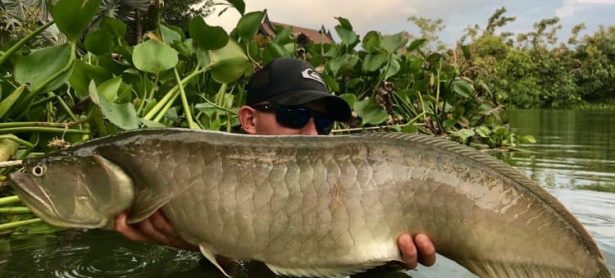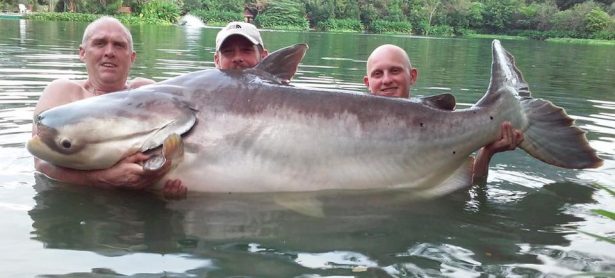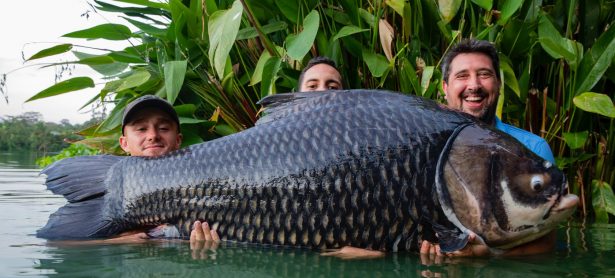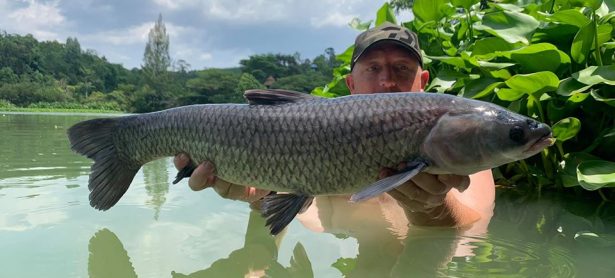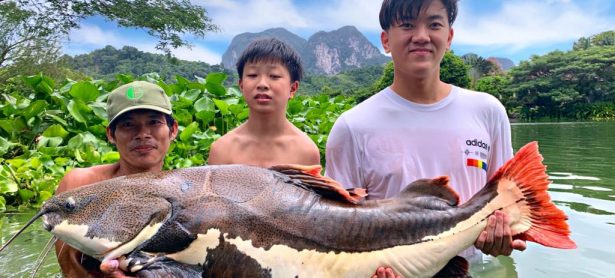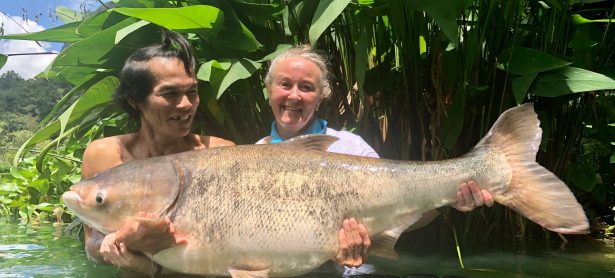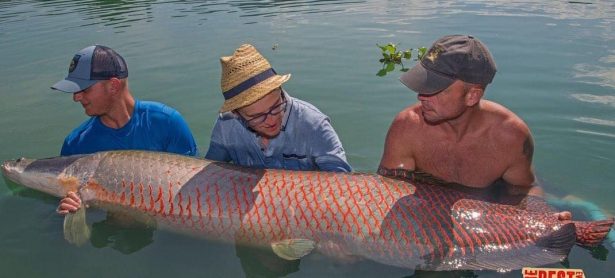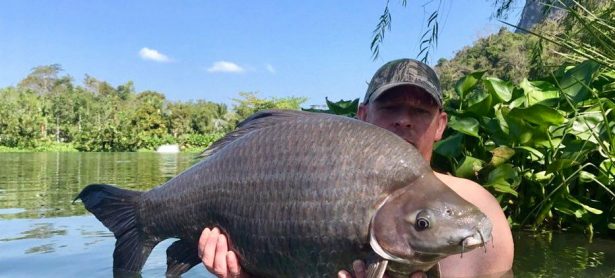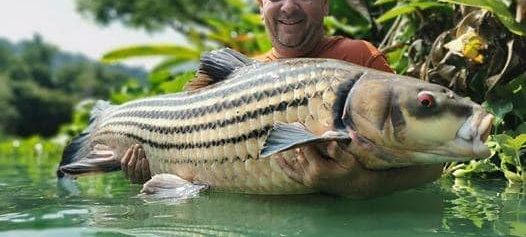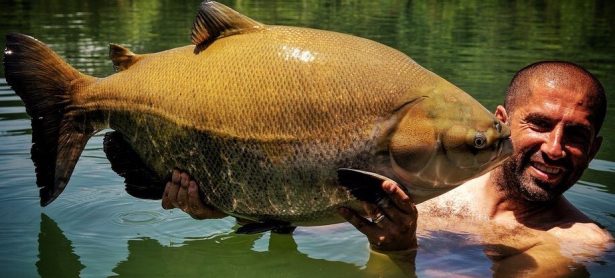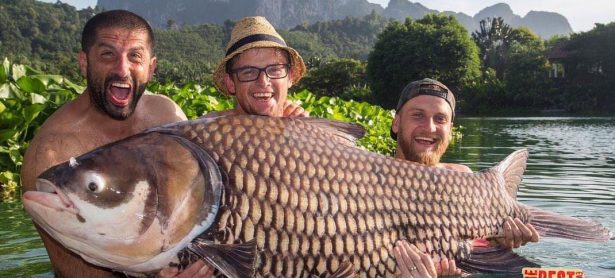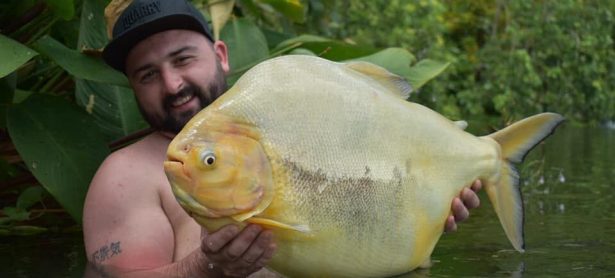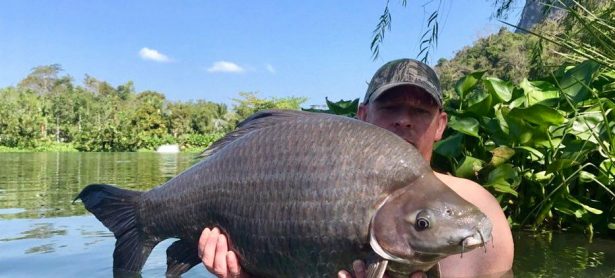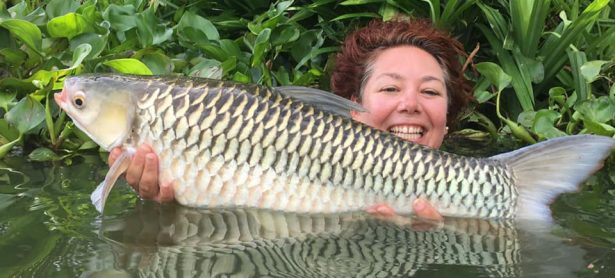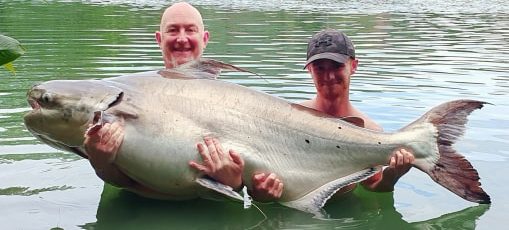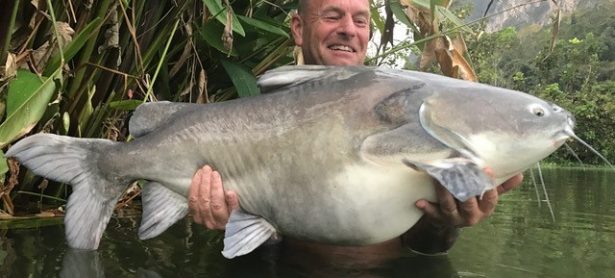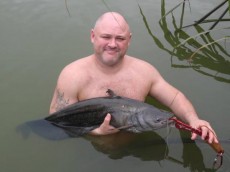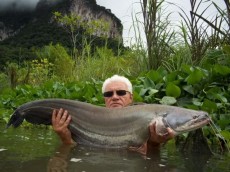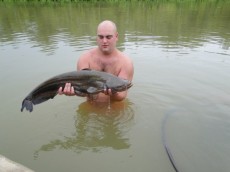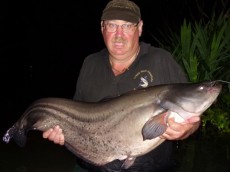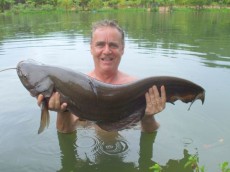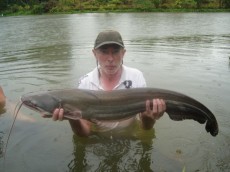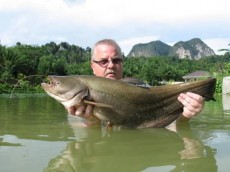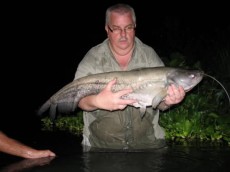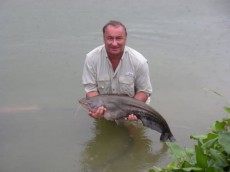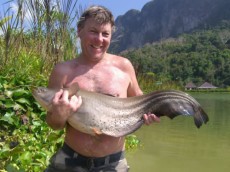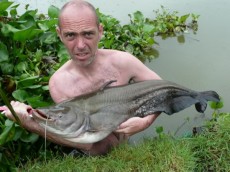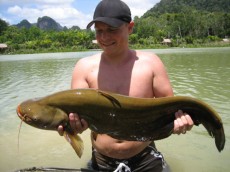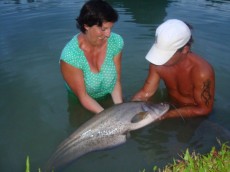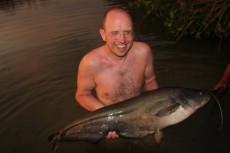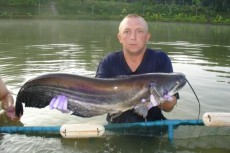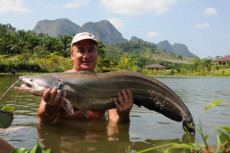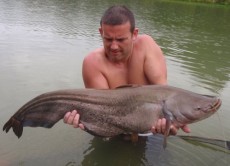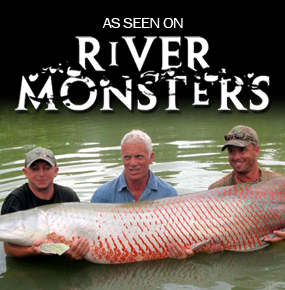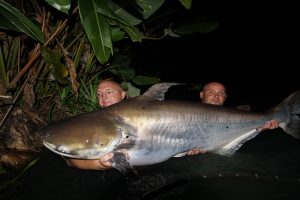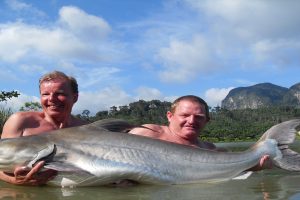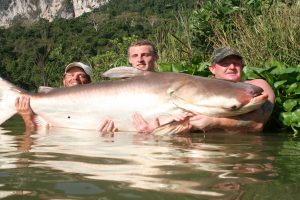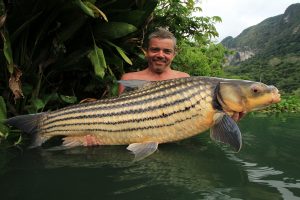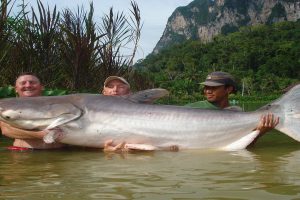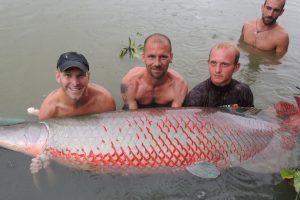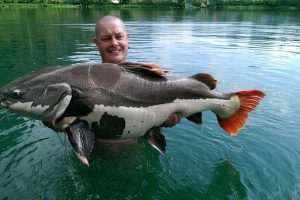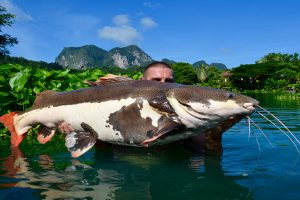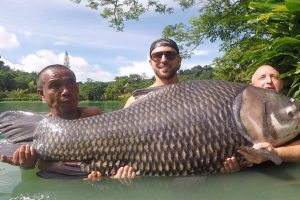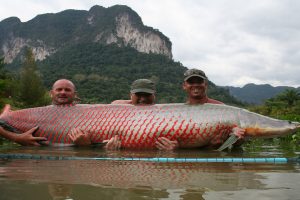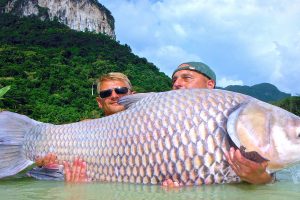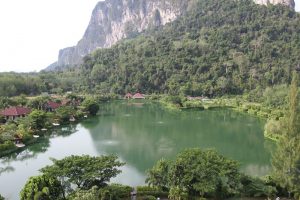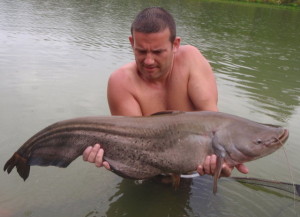 Name: Wallago leeri.
Name: Wallago leeri.
Species: Wallago leeri.
Thai name: Pla ituk.
Max length: 3m.
Max weight: 100kg.
IGFA record: Vacant.
Diet: Fish, squid, animals, frogs, birds, shrimp, crustaceans, and molluscs. (and humans!)
To fish for our wallago leeri the tactics are virtually the same as for the attu. Fish are one of the best baits, or rotting meat. As usual plumb the depth, pull a lead slowly across the bottom find the deep silted areas, and fish in the silt with bait that has gone off – the smellier the better. Wallago leeri are scavengers that feed on dead rotting carcasses, and they keep the lakebed clean. Use strong hook links such as Kryston Ton-Up as these fish have a double row of needle teeth. You do not need wire, as they are cautious feeders and will detect wire traces. For this fish you will be using a lead on a stem leading to a sunken float with a run ring attached. Expect the takes to be fast one-toners, but if these fish sense too much resistance they eject the bait. Once hooked they go on long, powerful runs, and as with the attu their favourite trick is to swim round the rear of the plateau and hug the bottom.
Any ledge or hole gives them somewhere to back into and hug the bottom, which results in stalemate. If the fish feels like it is snagged, more than likely it will be a wallago, as there are no snags in our lake. Slacken your line, put the rod back in the rest and wait for the fish to move off. Once this happens, bully the fish away from their lair. Being a member of the wels catfish family they are capable of swimming backwards as well as forwards, so be prepared when they approach the landing net. When you want your photo, ask our guide for a pair of gloves, as they twist and turn when you hold them. They are a very aggressive fish and will try to turn and bite you. Keep your hands clear of their mouths, and if you land a big one, let our guide support the head end. The wallago is another fish that we inject prior to release. As with the attu they are not an easy fish to target, but if you like adding different species to your list they are worth targeting. The bottom end of the lake near the restaurant is the deepest part of our lake at 8m, and this is where they live.
General facts on the wallago leeri:
Wallago leeri is another species of the catfish family siluridae or “sheathfish. They are commonly known by the name wallago. The body of wallago leeri is large and slender; the last 2/3 of the fish’s body being the tail. Their body colour is made up of black and brown. All their fins are the same colour as there body. They have a broad head with a depressed snout, and their mouth is very deeply clefted; its corner reaching far behind eyes with a double row of teeth, two barbules in two pairs, one set short the other very long, and very small eyes. It has a small dorsal fin with a very long anal fin resembling the blade of a sword, which gives them the local name of the sheathfish. They are found throughout Asia in large rivers and lakes that are river fed. Although the wallago leeri appears to be less common than the wallago attu, it has almost the same distribution range, and like its relative, the wallago leeri attains sizes over 2m.
They migrate from Cambodia and Laos down the Mekong River into Thailand around October to November, where they run up small streams to spawn after heavy rain. They breed in pairs under the cover of darkness over flooded grassland. This is when they are at their most vulnerable, as local fishermen kill them, because they are destructive to other more valuable food fish. Once they have spawned they abandon their eggs and travel back to their deep, silted lairs. Sometimes referred to as the giant catfish, they originate from parts of Thailand, Java, India and Burma. They are highly predatory, pure carnivores, and considered dangerous by the local fishermen, with their large mouth, formidable jaws and double band of conical teeth. They are also known as the human-eating fish, as in India where the locals lay their dead to rest in the rivers, they are rumoured to have become conditioned to feeding on human corpses! Over the centuries this has created a fish that has a taste for humans!
The fish’s habits are well documented, and traces of human corpses have been recovered from the fish’s stomach according to well known fishery experts. The fish is very rarely eaten, as they are said to carry the souls of the dead and taste of human flesh. By killing them local superstition claims it releases the spirits of the dead. Nearly all this is myth and legend, but it does make the wallago leeri a special case in the fish world. For our clients’ peace of mind, all our leeri were bred and grown on in fish farms for their valuable use as cleaners of dead and rotting fish, keeping lakes like ours in pristine condition.



